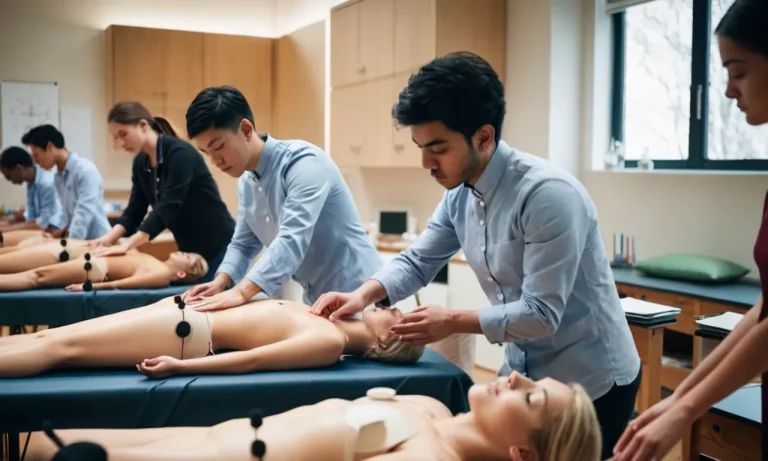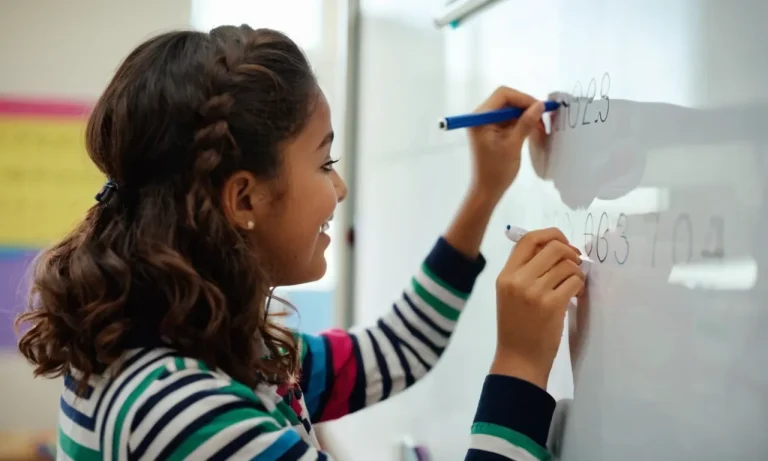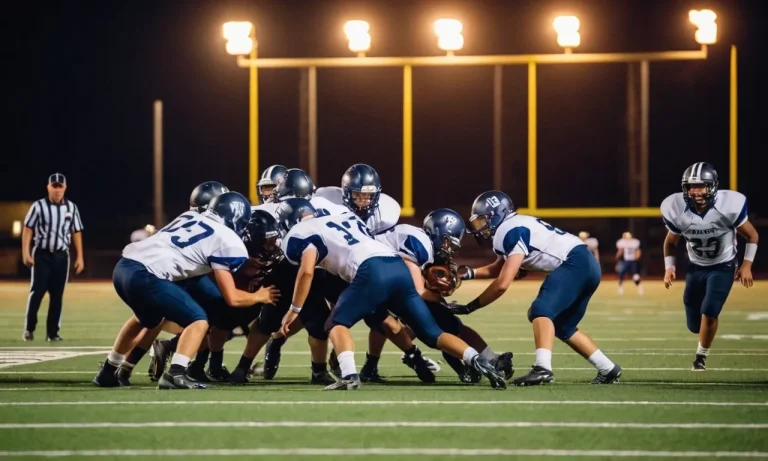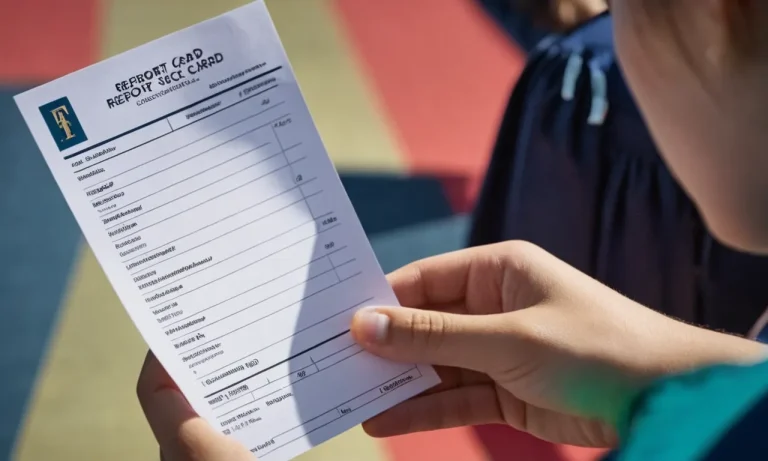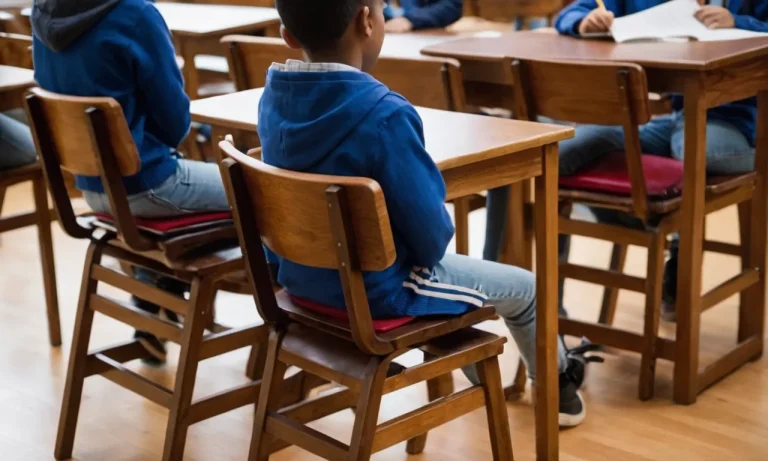In the realm of education, the issue of self-defense and its consequences has been a subject of intense debate. Many students and parents have found themselves grappling with the question: why do schools punish self-defense?
If you’re short on time, here’s a quick answer to your question: Schools often punish self-defense due to zero-tolerance policies, liability concerns, and a desire to maintain a safe and orderly learning environment.
However, this approach has faced criticism for being overly rigid and failing to consider the nuances of individual situations.
In this comprehensive article, we will delve into the complexities surrounding this topic. We will explore the rationale behind schools’ disciplinary actions, examine the potential consequences for students, and discuss alternative approaches that strike a balance between safety and fairness.
Zero-Tolerance Policies: A Double-Edged Sword
The Rise of Zero-Tolerance Policies
In the wake of high-profile school violence incidents, many educational institutions adopted zero-tolerance policies as a means to promote safety and discipline. The idea behind these policies was simple: any form of violence, aggression, or possession of weapons would result in automatic and severe consequences, regardless of context or intent.
This “one-size-fits-all” approach aimed to send a clear message that such behavior would not be tolerated.
Unintended Consequences
While the intentions behind zero-tolerance policies were well-meaning, their implementation often led to unintended consequences. According to a report by the American Progress Institute, these policies have disproportionately impacted students of color and those with disabilities, contributing to the school-to-prison pipeline.
Additionally, instances of students facing harsh punishments for minor infractions, such as bringing scissors or toy guns to school, have raised concerns about the lack of discretion and common sense.
Lack of Discretion and Context
One of the primary criticisms of zero-tolerance policies is their failure to consider the context and circumstances surrounding an incident. Self-defense, a natural human response to perceived threats, is often treated the same as unprovoked violence, leading to situations where victims are punished alongside aggressors.
This lack of nuance has sparked debates about the importance of discretion and case-by-case evaluation in disciplinary matters.
A study by the Education Week Research Center found that 64% of principals reported their schools had zero-tolerance policies for fighting, even in cases of self-defense. This statistic highlights the pervasive nature of these policies and the potential for unjust consequences for students acting in self-preservation.
Critics argue that zero-tolerance policies undermine the ability of school administrators and educators to exercise professional judgment and address situations on a case-by-case basis. Inflexible rules can lead to disproportionate punishments that fail to address the root causes of conflict or provide opportunities for learning and growth.
As the debate continues, many advocates call for a shift towards more restorative and trauma-informed approaches that prioritize understanding, accountability, and positive behavioral interventions.
Liability Concerns and Legal Implications
Schools face significant liability concerns and legal implications when addressing incidents of self-defense. The fear of potential lawsuits is a driving force behind strict disciplinary policies, as administrators strive to mitigate legal risks.
According to a study by the American Bar Association (https://www.americanbar.org/groups/litigation/publications/litigation-news/top-stories/2018/students-self-defense-and-school-liability/), schools have been sued for failing to protect students from harm, as well as for overreacting to altercations and violating students’ rights.
Fear of Lawsuits
- Schools are wary of potential lawsuits from parents or students who claim the school failed to maintain a safe environment or violated their child’s rights.
- Lawsuits can result in substantial financial damages, legal fees, and reputational harm for schools.
- According to the National Center for Education Statistics (https://nces.ed.gov/pubsearch/pubsinfo.asp?pubid=2022093), approximately 94% of public schools reported one or more incidents of violence, crime, or other disciplinary issues during the 2019-2020 school year.
Duty of Care and Reasonable Supervision
Schools have a legal duty of care to provide reasonable supervision and maintain a safe environment for students. This duty extends to preventing foreseeable harm and responding appropriately to incidents of violence or self-defense. Failure to uphold this duty can result in liability for the school.
The standard of “reasonable supervision” varies based on factors such as the age of the students, the nature of the activity, and the school’s resources.
Potential Legal Consequences for Schools
If a school is found to have acted negligently or violated a student’s rights, it may face legal consequences, including:
- Financial damages awarded to the plaintiff
- Court-ordered changes to policies or procedures
- Reputational harm and decreased enrollment
- According to a study by the NAACP Legal Defense Fund (https://www.naacpldf.org/wp-content/uploads/LDF_SchoolPushout_RevOct2005.pdf), students who are disciplined for self-defense are more likely to disengage from school, leading to lower academic achievement and increased dropout rates.
Given the complex legal landscape and the potential consequences, schools often err on the side of caution by adopting strict disciplinary policies for self-defense incidents. However, this approach can sometimes lead to unfair treatment of students who were genuinely acting in self-defense, highlighting the need for nuanced and thoughtful policies that balance safety concerns with individual circumstances.
Maintaining a Safe and Orderly Learning Environment
Schools have a fundamental responsibility to provide a secure and nurturing environment where students can learn and thrive without fear of violence or intimidation. Punishing acts of self-defense may seem counterintuitive, but it serves a crucial purpose in maintaining discipline and deterring future incidents that could disrupt the educational process.
According to a study by the National Center for Education Statistics (https://nces.ed.gov/programs/crimeindicators/), approximately 20% of public schools reported at least one violent incident during the 2017-2018 school year.
Preventing Escalation of Violence
By enforcing strict policies against physical altercations, even in cases of self-defense, schools aim to prevent the escalation of violence. A single act of retaliation, no matter how justified, can quickly spiral into a cycle of retribution and chaos.
This proactive approach helps defuse tensions and sends a clear message that violence will not be tolerated under any circumstances. According to a report by the American Psychological Association (https://www.apa.org/topics/violence/school-violence.pdf), over 80% of school staff believe that establishing clear rules and consequences for violent behavior is an effective strategy for preventing school violence.
Setting a Precedent and Deterring Future Incidents
By consistently enforcing disciplinary measures for acts of self-defense, schools establish a precedent that discourages future incidents. Students understand that there are consequences for engaging in physical altercations, regardless of the circumstances.
This approach sends a strong message that violence is never an acceptable solution, even in the face of provocation or perceived threats. A study conducted by the U.S. Department of Education (https://www2.ed.gov/admins/lead/safety/discipline/index.html) found that schools with clearly defined and consistently enforced disciplinary policies experienced a 25% reduction in incidents of violence compared to those without such policies.
Promoting Conflict Resolution and Non-Violence
By punishing acts of self-defense, schools aim to promote alternative methods of conflict resolution and non-violent strategies for addressing disputes. Students are encouraged to seek assistance from school authorities, counselors, or peer mediation programs to resolve conflicts peacefully.
This approach fosters an environment where communication, empathy, and problem-solving skills are valued over physical confrontation. According to the National Center for Conflict Resolution Education (https://www.nccre.org/), schools that implement comprehensive conflict resolution programs experience a 35% reduction in disciplinary incidents and a 28% improvement in student attendance.
By teaching students to navigate conflicts constructively, schools empower them with lifelong skills that promote peaceful coexistence and responsible decision-making.
Alternative Approaches and Potential Solutions
Restorative Justice and Mediation
Instead of traditional punitive measures, many educational institutions are embracing the concept of restorative justice and mediation. This approach focuses on repairing harm, fostering understanding, and rebuilding relationships.
Through facilitated dialogues and restorative circles, students involved in conflicts have the opportunity to share their perspectives, understand the impact of their actions, and collectively find solutions.
By promoting empathy, accountability, and healing, restorative practices can transform conflicts into learning experiences and create a more positive school climate. Organizations like the Restorative Works Institute provide valuable resources and training for schools interested in implementing these strategies.
Comprehensive Training for School Staff
Effective implementation of alternative disciplinary approaches requires comprehensive training for school staff, including teachers, administrators, counselors, and security personnel. This training should cover topics such as conflict resolution, de-escalation techniques, trauma-informed practices, and cultural sensitivity.
By equipping staff with the necessary skills and knowledge, they can better navigate complex situations, recognize underlying issues, and respond appropriately. The American School Counselor Association offers professional development opportunities and resources to support school counselors in their roles as advocates for restorative practices.
Did you know that according to a study by the RAND Corporation, schools that implemented restorative justice practices saw a significant reduction in suspensions and improved academic outcomes?
Reviewing and Revising Disciplinary Policies
To truly address the issue of punishing self-defense, schools must critically review and revise their disciplinary policies. This process should involve input from various stakeholders, including students, parents, educators, and community organizations.
By analyzing data on disciplinary incidents and their outcomes, schools can identify areas where policies may be disproportionately impacting certain groups or failing to address the root causes of conflicts.
Collaboratively, they can develop comprehensive guidelines that prioritize prevention, early intervention, and restorative approaches while ensuring fair and equitable treatment for all students. The Education Week provides insights and recommendations for revising discipline policies to promote equity and student well-being.
Transitioning away from punitive disciplinary measures towards more restorative and transformative approaches is no easy task. However, by embracing alternative solutions like restorative justice, comprehensive staff training, and policy revisions, schools can create safer, more inclusive environments where conflicts are addressed through understanding, healing, and growth.
😊 The journey may be challenging, but the potential rewards – fostering empathy, accountability, and a positive school climate – are truly amazing. 👏
Conclusion
The issue of schools punishing self-defense is a complex and multifaceted one, with valid concerns on both sides. While schools aim to maintain a safe and orderly learning environment, the rigid application of zero-tolerance policies and liability concerns can sometimes lead to unfair consequences for students acting in self-defense.
As we move forward, it is crucial to strike a balance between safety and fairness. Alternative approaches, such as restorative justice, comprehensive training for school staff, and a review of disciplinary policies, offer potential solutions.
By fostering open dialogue, considering the nuances of individual situations, and promoting conflict resolution and non-violence, we can create a more just and equitable educational system that prioritizes the well-being of all students.

